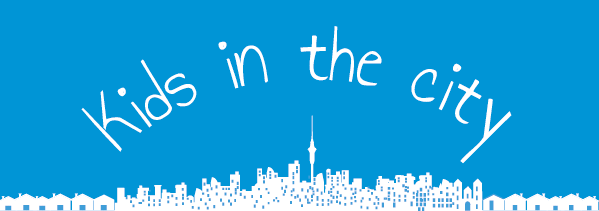This project engaged children and young people in co-designing public space at the Eastern Viaduct on Auckland’s waterfront and in planning for the regeneration of the Puhinui Stream in South Auckland. The research team worked with mana whenua, designers and staff from Panuku Development Auckland, Boffa Miskell, The Southern Initiative and Healthy Families to explore effective methods of engagement and facilitate the meaningful participation of children and young people in public space design. The research was funded through the National Science Challenge, Building Better Homes, Towns and Cities, Ko Ngā wā Kainga hei whakamāhorahora.
Despite widespread acknowledgement that children, as citizens, have a right to be included in urban design and planning, it seldom happens often because of uncertainty on how to proceed. Our research aimed to address this knowledge gap.
Research questions were:
- How can local government effectively engage children/young people (8-16 years) of different ethnicities and socio-economic backgrounds in co-designing child-friendly public spaces, thus contributing to the social sustainability of our cities?
- What changes are needed to business-as-usual public space design processes and protocols to accommodate children and young people’s participation?
In each case study, on and off-site workshops enabled children to experience and explore the physical landscapes, learn about their history, ecology and current use, and the Council/Panuku brief for their transformation. Using a range of age-appropriate methods – drawing, taking and captioning photographs, making models, talking, exploring and playing games – children discovered ways to contribute their likes, dislikes and design ideas. The adults learnt to see the sites in new ways through the experiences and creativity of the children, which in turn opened up avenues for further inter-agency and community collaboration.
As researchers, we hope the following resources, developed through the research, will assist communities, local government and design professionals bring children’s voices to urban design and planning.
1. Engaging children in public space design: Tips for designers
A simple ‘how to’ co-design toolkit is illusive, as public spaces vary greatly and so too do community aspirations and the experiences of children in different places. These ‘tips for designers’ highlight general principles and effective strategies identified through the co-design case studies.
2. Kids in the City Videos: Codesigning public space with children
Two videos of varying length are available:
15 minutes:
1 minute:
3. Co-design with Young Aucklanders: Eastern Viaduct Renewal & Puhinui Stream Regeneration
This report provides an overview of the case studies at both sites and a commentary on the process from organisational participants, with the separate interim reports as appendices. These provide detail on the methods of engagement and outcomes of children’s participation, including illustrations of the children’s work. The reports were presented to Panuku and the contracted design teams/landscape architects involved in the public space transformations. Designers reported back to the children on the value of their input and how (or not) their ideas were being incorporated into the designs of the two public space projects.
